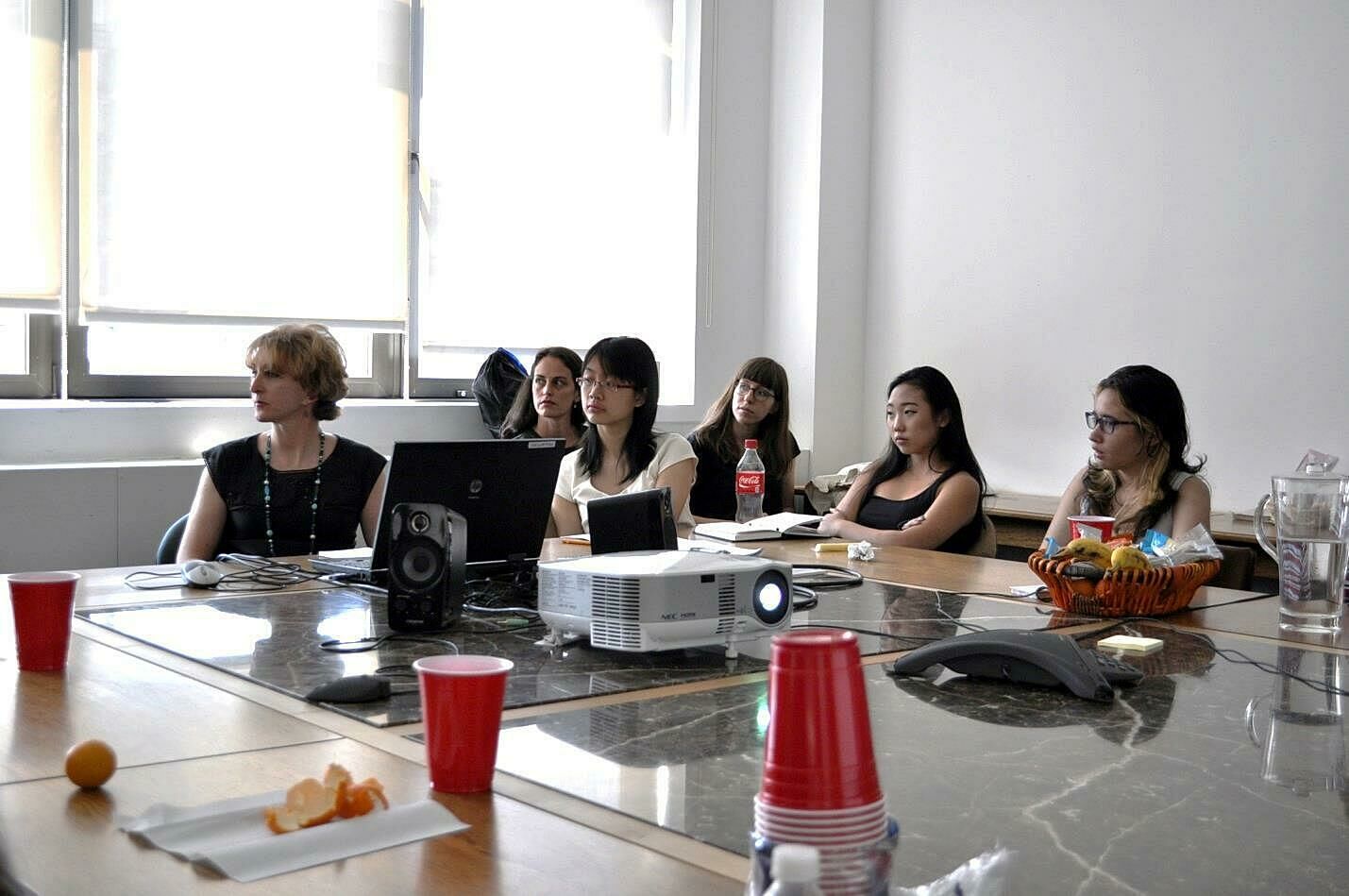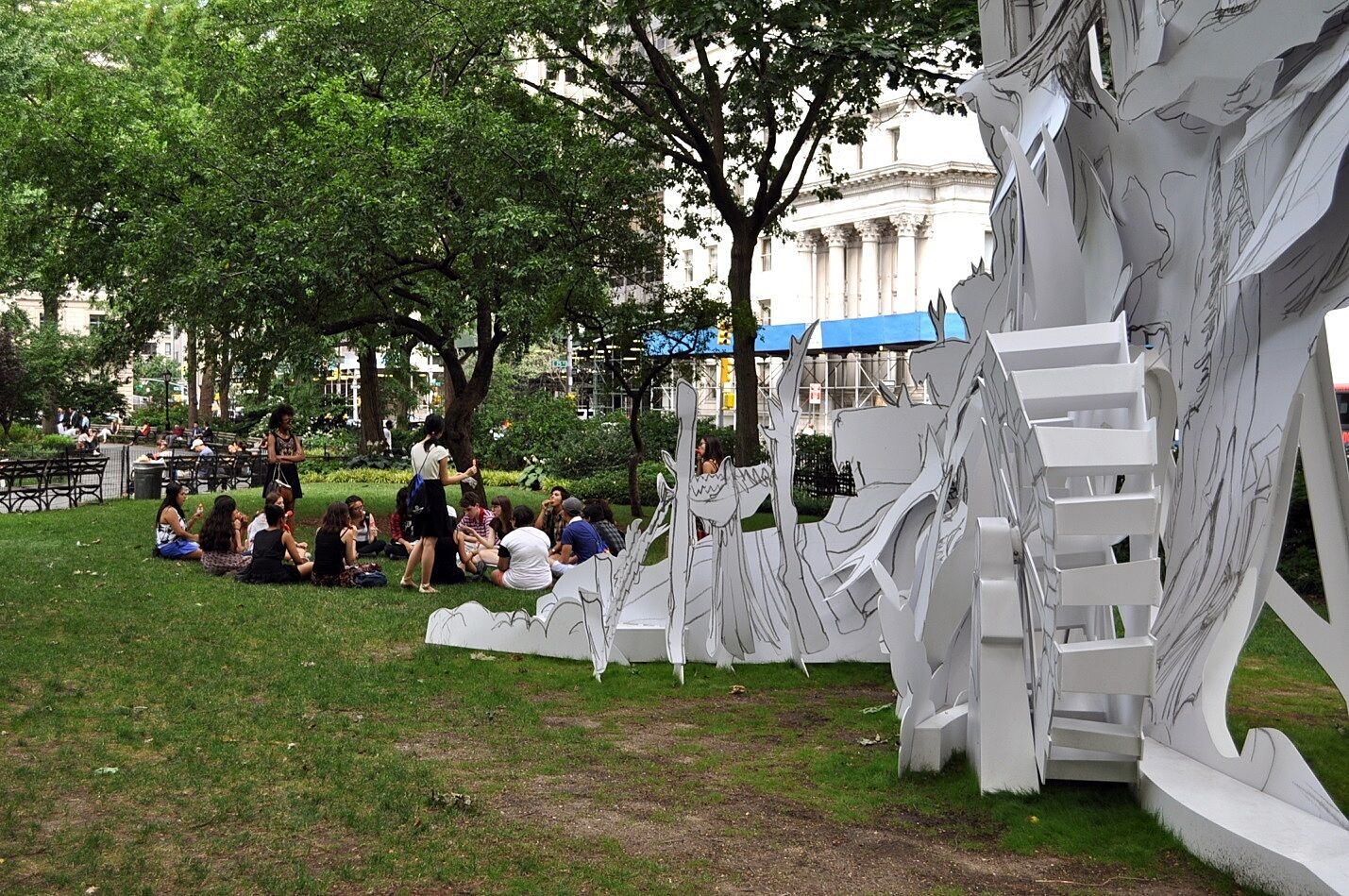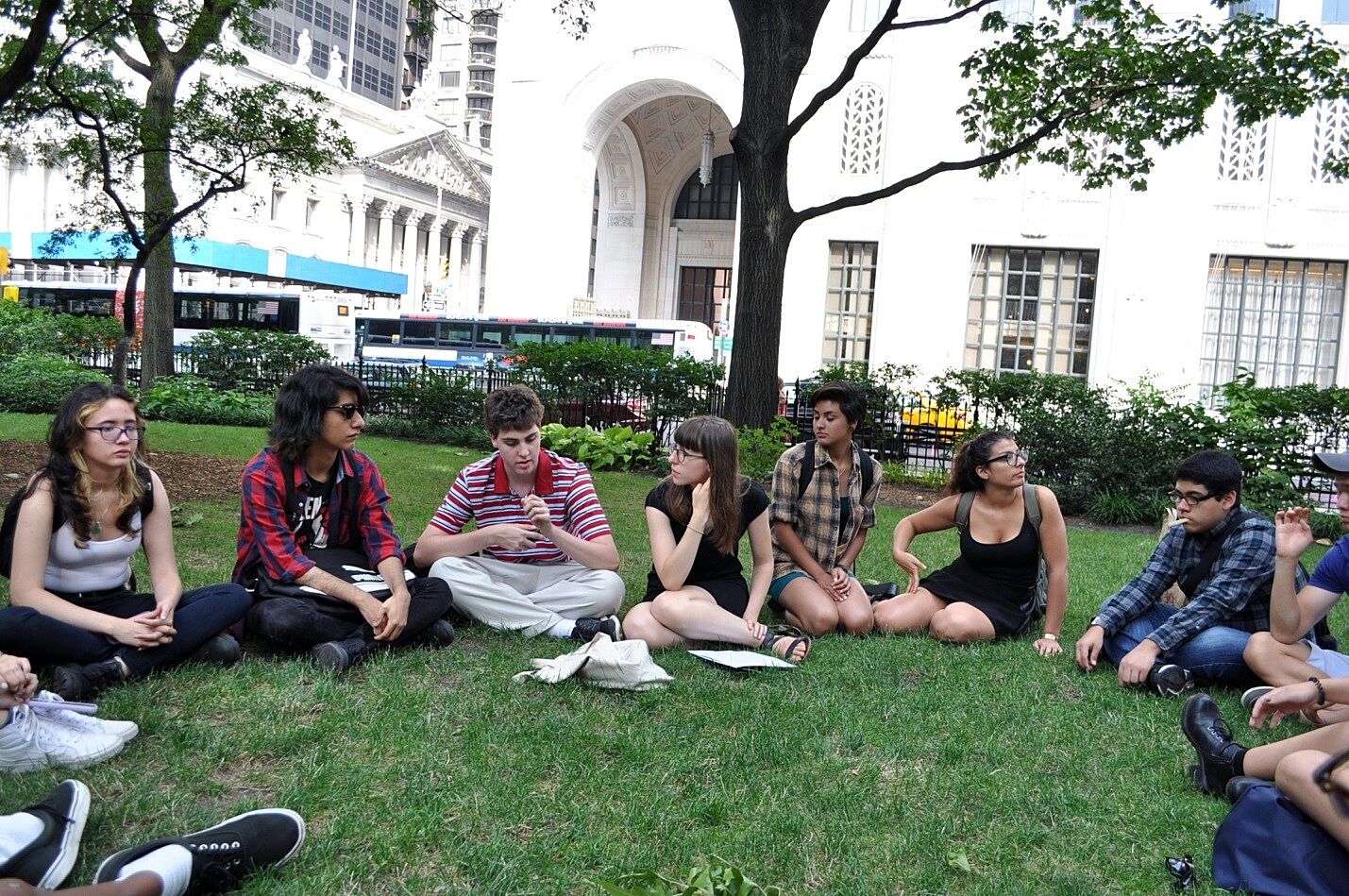YI Summer: Careers and Public Art
Jul 9, 2014
Part of the goal of the YI Summer Intensive program is to help us with career skills and preparation for a successful future, so on July 9, we met Lisa Dowd, the Manager of Human Resources and Adam D. Weinberg, the Alice Pratt Brown Director of the Whitney Museum.
Dowd discussed the qualities of a successful job application process, including how to go on a job interview. She also shared some tips for writing a good resume and cover letter: for instance, your resume should never be longer than one page, and your cover letter should be brief, formal, and have absolutely no typos! She showed us a PowerPoint presentation that helped explain these key elements of the job search process. After her presentation she lets us ask any questions we had about her job and the job application process. She was very helpful and insightful, and she answered all of our questions.
Weinberg spoke about what it’s like to be the Director of the Whitney Museum. One thing he likes is getting to work with a lot of smart people. He also told us about how he discovered that he wanted to work in museums, starting with his interest in photography in high school. Then he placed a Big Mac box in front of us and asked us to write ten things we noticed about it. Afterwards we shared our favorite observation with the group. Hearing everyone’s observations about something as simple as a Big Mac box really showed how much meaning there can be, even in the simplest objects.
That afternoon we walked to Madison Square Park to look at the public art on view there—three sculptures by the artist Rachel Feinstein, called Folly. These large white sculptures resemble theatrical scenery, making park visitors seem like actors on a stage.
A folly is an architectural term that describes a building that has no practical use or purpose beyond beauty, and we gathered around Feinstein’s Folly to discuss whether her sculptures met the architectural definition of a folly. We decided in the end that art, while beautiful and not “useful” in the traditional sense, does have some greater purpose that makes it more than just a folly. In the park, for instance, Feinstein’s Folly makes us notice our surroundings and asks us to use our imagination.
By Krystal and Leo, YI Summer Participants



